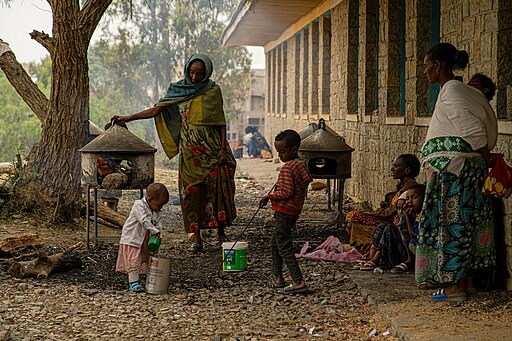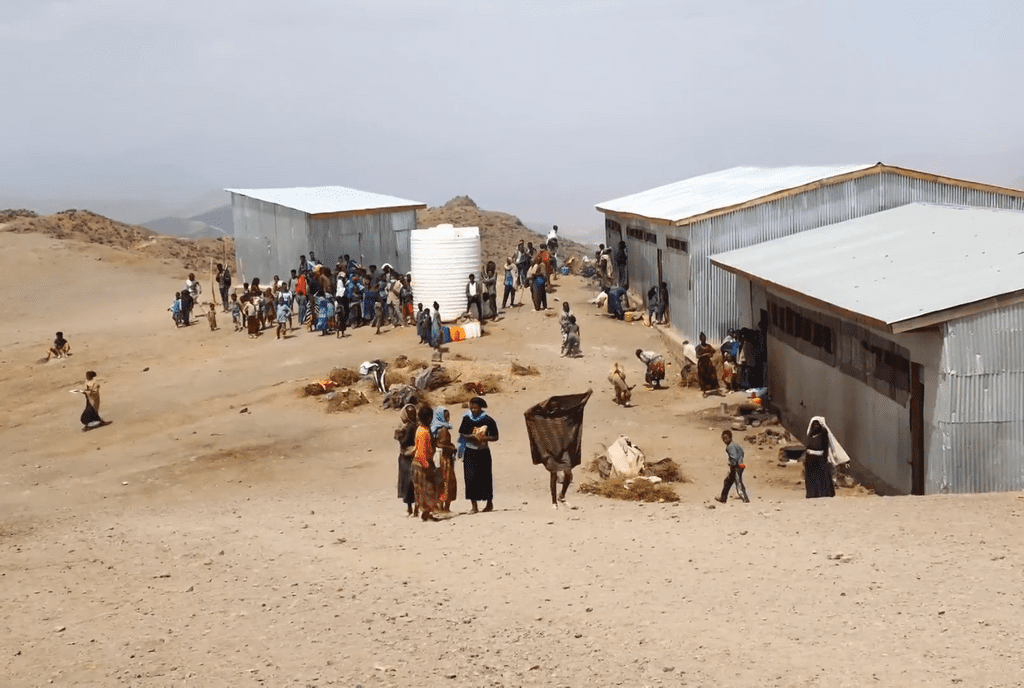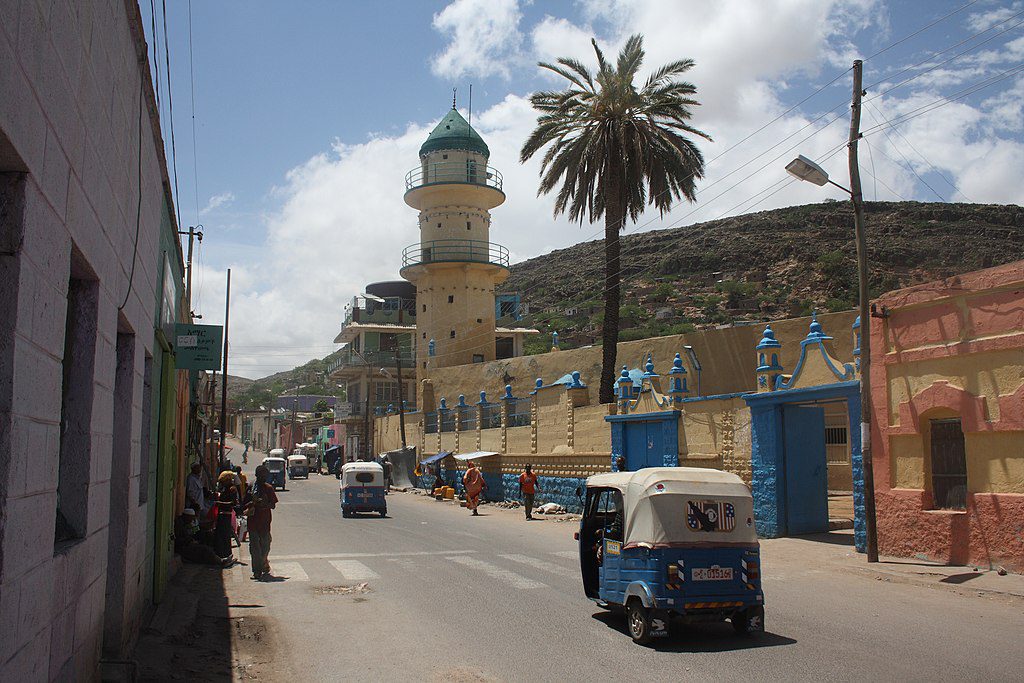Readers may remember my previous three-part post ‘Mekelle: A city under siege’ written in February 2022. That post attempted to show readers what a city under siege looks like by covering some facets of life in Mekelle, the capital of Tigray. Most people will assume that the siege has been lifted since the signing of the Pretoria agreement between the Federal Government of Ethiopia and the TPLF in November last year. Despite this expectation, however, the city continues to live under a lingering siege where some of the aspects of the blockade are decentralized and others continue in the form that they existed. This post is an update on some facets of life of a city under a lingering siege.
“Is the siege over with all these things lingering?”
Dr. Abraha Gebreegziabiher, Ayder Hospital, Mekelle
The streets of Mekelle are now full of people and tricycles. Someone who had been hearing of the empty streets of Mekelle during daylight last year would definitely be surprised to see it humming with activity and would automatically feel as if the city was no longer affected by war. If you go to visit Edaga-Seni, the biggest open market in the city, you will see vibrant everyday life of shoppers and traders. You would hear the horror stories of the siege during the previous years but feel as if the city is now back to normal. Again, if you were to go in the early evening to visit what they call Hayahulet, an area named after a place in Addis Ababa with the highest concentration of bars and nightclubs, you would observe the verandas of the bars full of guests drinking beer and would definitely feel that the dark days of the city are over long ago.
This impression is created not only because of the contrast between what you may have heard and what you immediately see but also because of deliberate effort by the authorities in Addis Ababa and Mekelle to create an atmosphere of normalcy in the city. Every little bit of support to the region is reported in the news media. You will hear and see news stories about a few hundred dollars’ worth of food served to homeless displaced people; a total of approximately US$ 13 million donated from the regions for the reconstruction of Tigray; and the donation of used furniture donated to build the capacity of institutions destroyed by war by Addis Ababa city administration among other things. You will hear reports of workshops held to reconstruct Tigrai and/or rehabilitate civilians each time you switch on your TV and radio among. By contrast, the suffering of the people rarely comes to the media.
The reality is that Mekelle is a long way from normalcy. I have put together my own observations and I hope this will motivate some young men and women to do a proper and deeper reporting about what is happening on the ground. Even if you cannot do much to alleviate the suffering of the poor, you can at least talk of their suffering so that those with capacity will know.
The city still hosts large numbers of IDPs
Thousands of internally displaced persons (IDPs) from many corners of Tigray – Western; parts of North-western, Eastern, and Southern Tigray – are still living in the city of Mekelle facing every type of challenges a human being can face to survive from day to day. The regional government has been giving them dates for their return to their places of origin. But these dates change. None of the deadlines have been met and the IDPs are still in living their makeshift camps. In addition to those IDP camps, displaced persons are still sharing classrooms of elementary schools and neighborhood meeting halls across the city.
Over thirty percent of the land within the administrative boundary of Tigray is still under the occupation of either the Eritreans or Amhara forces. This is despite the commitment made in the Permanent Cessation of Hostilities Agreement, signed in Pretoria in November, and the follow-on Nairobi Declaration on Modalities of Implementation. According to this widely-hailed plan, there was to be a simultaneous withdrawal of any forces that were not the Ethiopian National Defense Force (ENDF) along with the disarmament of heavy weapons of the Tigray Defense Force (TDF). The TDF has been duly disarmed not only of its heavy weapons but also all group weapons including machine guns and a variety of rocket launchers without any sign of simultaneous withdrawal by non-ENDF forces.
The residents of Mekelle don’t know if there is might have been a subsequent agreement between the authorities in Tigray and Addis Ababa with a new timeline for the withdrawal of these occupiers. As a result, the city has no idea when the return of the IDPs it is hosting will be able to return to their homes.
The city hosts thousands of war veterans, many of them disabled
The city also hosts large number of disabled veterans from the war. These men and women are waiting for physical, psychological, social, and economic rehabilitation. Several campuses of Mekelle University are the temporary homes for these disabled veterans and the university is yet to re-open at full capacity. The city has seen repeated demonstrations by these disabled veterans demanding the proper provision of proper basic services like food, clothes, and medication.
A bigger, longer-term challenge is going to be physical rehabilitation of the disabled, including provision of prostheses such as artificial appliances and physiotherapy services. At the end of the previous civil war in 1991, Tigray established a prosthesis orthosis and physiotherapy center in Mekelle to treat the disabled veterans of that time. That’s all that exists today. As a result, the waiting list for getting orthopedic appliances is so long that veterans have to wait for months to get the appliances. Right now, the waiting list for orthopedic appliances extends to January 2024. Once they have been provided with the appliance, disabled veterans need a checkup every six months in case the appliance needs to be adjusted. Also, they may need to visit the center if and when the appliance is damaged or giving them discomfort. Tigray therefore needs more of these facilities at proximate places for service to veterans. The authorities might have plans for expanding the services, but for now Mekelle is witnessing a large number of veterans waiting to get the services.
Large number of TDF members are still waiting for a proper demobilization and reintegration program. Many of them were given a small subsidy to support them for three months with promises of more to follow. There are now in their second month of demobilization and they are yet to know what they will be receiving in their reintegration program. Mekelle has also seen these groups demonstrating to demand the subsidy payment and to be included formally in the upcoming reintegration.
The problem with the demobilization and reintegration of former TDF members is not limited to delay. There’s also a problem with the expectation that is being created. Given that there are a variety of competing priorities for post-conflict reconstruction and rehabilitation, many fear that veterans’ have unrealistically high expectations for what they will receive – a recipe for serious disappointment later if those expectations are disappointed, that could come with serious social and political costs. People who worked on such rehabilitation programs in the past know that the responses of beneficiaries to a rehabilitation package is not related to how big or small the package is but instead whether the package meets the expectations of the recipients. It is for this reason ‘expectation management’ becomes a crucially important leadership task during rehabilitation. Right now, the Interim Administration of Tigray and the TDF are not managing expectations well.
The suffering of victims of sexual violence continues unabated
An uncounted number of Tigrayan women and girls are survivors of sexual violence. The Damage Assessment Commission of the Tigray administration made a survey that covered 1.7 million people, about one quarter of the total population. Unofficial reports indicate the number of people reporting that they are survivors of sexual violence to be more 45,000 for that segment of the population. Given that the Tigrayan society is very conservative, one can imagine a significant number of victims who opted to not report their suffering during the survey. If one adds the three quarters of the population that was not included in the survey either due to lack of capacity or because their areas of residence are still under occupation the number would be many times higher.
The survey data, as yet not reported, will indicate the number of women who were forcibly impregnated and those whose pregnancy was interrupted. It will also reveal how many children are born of rape. The kids born of rape can be considered as sons and daughters of Abiy Ahmed and Isaias Afewerki. The individual identities of fathers of the kids are not known, but they were wearing the uniforms of the two states. To their mothers, these children are also constant reminders of the crime committed on them. The perpetrators of the crimes didn’t account for their crimes and no credible process for doing this is not yet in place.
These victims continue to live traumatized. For many of them the experience of war continues as they live the effects of the crimes committed on them every single hour and day. Many lost their marriages and families and continue to live under stigma. Many suffer serious physical problems caused by the injuries inflicted on them. All of them continue to need psychological and economic rehabilitation. Those who are struggling to raise children born of rape are especially challenged by psychological and economic difficulties and often social ostracism. All of them are longing for justice.
Here is a story of Zayid that gives the glimpse of how, for survivor victims of sexual violence, the war has not finished.
I had a chance to talk with Zayid, a survivor of a sexual violence who was impregnated as a result of rape. Zayid was raped by EDF soldiers in February 2022. She was young and she only knew of her pregnancy after three months. At the time she reached a hospital the fetus was already five months and too late to be interrupted. Zayid delivered the child in a safe house in Mekelle. She now has a two years and five months old beautiful baby boy. But her journey of motherhood is traumatizing. She says it was hard for her to accept the fact that she had to let the fetus grow in her and give birth. It was a constant reminder of suffering and humiliation she went through. Furthermore, she says: “I had a dream to study and be wedded to my beloved one and get children and make my family proud by becoming a good wife to my husband. Now that dream is lost.” She continues: “There is no chance for me to go back to school and it will be so difficult to have a husband, let alone make my family proud.”
Zayid is happy that she doesn’t have any physical problems right now but she is facing a relentless economic struggle to raise her child and support herself as a servant in a private house. When at work during daytime, she leaves her child with her passionately caring grandmother. Her grandmother with all her kindness at times unintentionally says some words that reminds her of the crime committed on her. She says, my grandmother affectionately cares for her grandson but sometimes (usually when giving it bath) unconsciously hints at a painful issue. She may say: “Ehhh! this baby doesn’t have any resemblance to our family. Does it truly belong to us?” Zayid says she gets hurt when she hears those words and she cannot ask her beloved grandmother not to say them as the love she has becomes a barrier. She also hates people asking her “Is this your baby? Who is his father and where is he?”
Despite the prospect for peace, Zayid’s poignant words echo the sentiment of countless survivors of sexual violence: they are robbed of their dreams, they are physically, economically, and psychologically challenged and they are yearning for justice. It is in the middle of these stresses and hardships that they struggle to navigate their path for survival. The lucky ones are finding a way back to normalcy. All of them are still living the war as there is no attempt in sight to cure their problems.
Humanitarian Assistance
A trickle of humanitarian assistance reached Tigray soon after the end of hostilities. This almost completely stopped five months ago as USAID and other humanitarian organizations decided to stop providing aid up until the systematic theft, they observed in Ethiopia’s humanitarian aid system is investigated and remedied. They want those responsible to be called to account and appropriate mechanisms to control leakage put in place. United Nations and USAID officials indicated that the preliminary findings of the investigation indicate that the theft was going on for a long time in a systematic way and was essentially orchestrated by high level Ethiopian government officials at both federal and regional level. To its credit the Interim Administration of Tigray (IAT) took this allegation seriously and fully cooperated with the humanitarian organizations in their investigation. They set a high-level commission of their own to investigate any food theft within their government structure.
The high-level investigation commission of the Interim Administration of Tigray found that more than 7,000 tons of wheat and 215,000 liters of food oil were stolen by individuals working for the government and several humanitarian organizations in Tigray. This is aside by the larger amount of humanitarian aid stolen by the Eritrean Defense Force, ENDF, and their allies during the eight months of occupation in Tigray (November 2020-June 2021). Following this finding 492 people were suspected of which 376 were investigated with ongoing investigation into those remaining. Prosecution cases have been opened and 148 persons are released on bail while the remaining 198 are in custody.
Despite this ongoing investigation and prosecution in Tigray, however, food aid distribution by international humanitarian is yet to start. This happened while hunger induced death were increasing. Dr. Gebrehiwot, head of the region’s disaster prevention and preparedness commission, reports the deaths of 1300 people from hunger since the interruption of food aid distribution. Out of these 59 of them are IDPs from western Tigray living in camps. The death count is increasing. He further says this is happening while 1.7 million quintals (a quintal is a sack of 100 kg, so this total adds up to food enough for 5.2 million people for one month) is available in the stores of humanitarian organizations in Tigray now. Some of it is facing the risk of expiring unless it is distributed soon.
Dr. Gebrehiwot further says that the humanitarian organizations had promised to begin distributions at the beginning of July, and later mid-July, but we are now in August and the hungry are yet to receive food. They are still experimenting with some altered modalities for reaching the needs and going through the data for distribution.
Most recently, the Interim Administration of Tigray from its modest financial resources bought food to the value of 136 million birr (approximately 23,000 quintals of grain) and distributed it to the IDPs from western Tigray in Mekelle, Axum, Shire, and Dedebit and Mai-Hansse in western Tigray. A further 31,000 quintals were found from the national food security agency and distributed to the needy. This amount was Tigray’s share when the national authority allocated some of its reserve to the regions. With the exception of a share from this small distribution, the IDPs in Mekelle have not received any food aid since April.
There is also a dispute in the figure of the number of beneficiaries between the international humanitarian organizations and the IAT. The working population figure of the regional administration of Tigray at the beginning of the war was 7.9 million while the federal government used its own figure of 5.2 million. According to the head of the regional disaster prevention and preparedness commission, this figure of the Federal Government was not an informed estimate by the central statistics agency but a figure simply picked by the national disaster preparedness agency. The IAT now says the people in need of food right now number 6.3 million (the remaining being in areas that are not in its control at this time) while the humanitarian agencies are using the figure of the federal government, which is 5.2 million. Both are now undertaking a joint assessment of people in need so that they can arrive at an agreed figure.
In the middle of this, the ultimate price is paid by the hungry. The target beneficiaries of humanitarian aid have literally nothing to do with the theft, the controversies over the numbers or the mechanisms for controlling theft. Nevertheless, they are the victims, being punished for nothing that is their fault. The UN and USAID took draconian measures that are costing the lives of thousands from hunger. Meanwhile, Tigrayans observe that when it is their own resources at stake, international donors are decisive in demanding accountability – while showing little interest and less urgency in responding to the people’s demand for justice.



